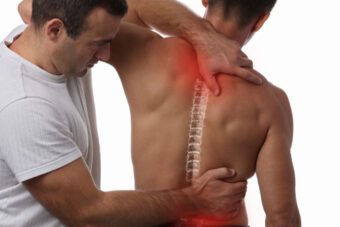 Scoliosis is a common spinal condition that affects millions of people, typically starting during adolescence and progressing throughout adulthood. Characterized by an abnormal sideways curvature of the spine, scoliosis can impact posture, mobility, and overall quality of life if left untreated. In this blog, we will discuss the signs and symptoms of scoliosis, as well as explore the causes and risk factors associated with this condition.
Scoliosis is a common spinal condition that affects millions of people, typically starting during adolescence and progressing throughout adulthood. Characterized by an abnormal sideways curvature of the spine, scoliosis can impact posture, mobility, and overall quality of life if left untreated. In this blog, we will discuss the signs and symptoms of scoliosis, as well as explore the causes and risk factors associated with this condition.
Understanding Scoliosis
Scoliosis is a complex condition that can range from mild to severe, with varying degrees of curvature and spinal rotation. While some cases of scoliosis are mild and may not cause any noticeable symptoms, others can be more severe and potentially lead to complications if left untreated. It’s essential to be aware of the signs of scoliosis and seek medical evaluation if you suspect you or someone you know may have this condition.
Signs and Symptoms
One of the most common signs of scoliosis is an abnormal curvature of the spine, which may present as a sideways “S” or “C” shape when viewed from the back. Other signs and symptoms of scoliosis may include uneven shoulders or hips, a visibly protruding shoulder blade, an asymmetrical waistline, or leaning to one side. In some cases, scoliosis may also cause back pain, muscle spasms, or difficulty breathing if the curvature of the spine affects the position of the ribs and chest cavity.
Causes and Risk Factors
The exact cause of scoliosis is often unknown, although there are several factors that may contribute to the development of this condition. Some common causes and risk factors of scoliosis include:
Genetics: Scoliosis has a genetic component, meaning it can run in families. If a close family member has scoliosis, you may have an increased risk of developing the condition.
Age: Scoliosis typically develops during adolescence, as the spine undergoes rapid growth and changes. Adolescent idiopathic scoliosis is the most common type of scoliosis and typically affects children between the ages of 10 and 18.
Gender: Scoliosis is more common in females than males, with girls being more likely to develop scoliosis that requires treatment.
Underlying conditions: Certain underlying conditions, such as muscular dystrophy, cerebral palsy, or spinal cord injury, can increase the risk of developing scoliosis.
Complications
If left untreated, severe cases of scoliosis can lead to a range of complications, including chronic back pain, reduced lung function, spinal deformity, and decreased mobility. In some cases, severe scoliosis may require surgical intervention to correct the curvature of the spine and prevent further complications. Early detection and treatment of scoliosis are crucial in preventing these complications and improving long-term outcomes for individuals with this condition.
Diagnosis and Treatment
Diagnosing scoliosis typically involves a physical examination, imaging tests such as X-rays or MRI scans, and measuring the degree of curvature of the spine. Treatment for scoliosis will depend on the severity of the condition and may include observation, bracing, physical therapy, or surgery. The goal of treatment is to reduce the progression of the curvature, alleviate symptoms, and improve spinal alignment and function.
Prevention and Management
While it may not be possible to prevent scoliosis entirely, there are steps you can take to manage the condition and reduce the risk of complications. Regular medical check-ups, maintaining good posture, staying physically active, and practicing proper body mechanics are essential in managing scoliosis and preventing it from worsening over time. It’s also important to seek timely medical evaluation if you notice any signs or symptoms of scoliosis, as early detection and treatment can lead to better outcomes.
Summary
Recognizing the signs and symptoms of scoliosis and understanding the causes and risk factors associated with this condition are essential in promoting early detection, diagnosis, and treatment. By being aware of the signs of scoliosis and seeking medical evaluation if necessary, you can take proactive steps to manage the condition and improve your overall spinal health and quality of life. If you or someone you know may have scoliosis, consult a healthcare provider for a thorough evaluation and personalized treatment plan.
Need a Prosthetic and Orthotic Laboratory in Farmingdale, NY?
Prothotic Labratories, Inc. is a family-owned and -operated prosthetics and orthotics specialist based in Farmingdale, New York since 1988. We offer the highest quality of products, services, and patient care for all of your prosthetic and orthotic management needs. We specialize in pediatric prosthetics, but also offer adult products and services as well, such as scoliosis management, creating custom-designed prosthetics for the upper or lower extremities, and much more. We also have extensive experience in the orthotic management of cerebral palsy, arthrogryposis, osteogenesis imperfecta, spinal muscular atrophy, and neuromuscular and idiopathic scoliosis. Give us a call today, or visit us for more information!
